Abstract
Linkage between the locus for coagulation factor XIIIA (F13A) and HLA-region genes has been revealed during a linkage study between F13A and approximately 40 other polymorphic marker genes. In males, the maximum lod score between F13A and HLA-region genes (HLA-A, -C, -B, -DR; C4A, -B; Bf; and/or C2) is 7.60 at theta 1 = .18. To GLO, the maximum lod score is 2.37 at theta 1 = .19; to PGM3, .22 at theta 1 = .35. Female data indicate a clear sex difference in recombination frequency between F13A and HLA. The present findings, in combination with earlier knowledge of PGM3/GLO/HLA localization and gene distances, show that F13A is distal to HLA on the short arm of chromosome 6 in man. It is thus likely that by including FXIIIA typing in linkage studies, the whole male 6p is within mapping distance of highly polymorphic, classical marker genes. Earlier findings that the Hageman factor gene (F12) is located in the same chromosomal region may indicate the presence of a coagulation factor gene cluster in this region.
Full text
PDF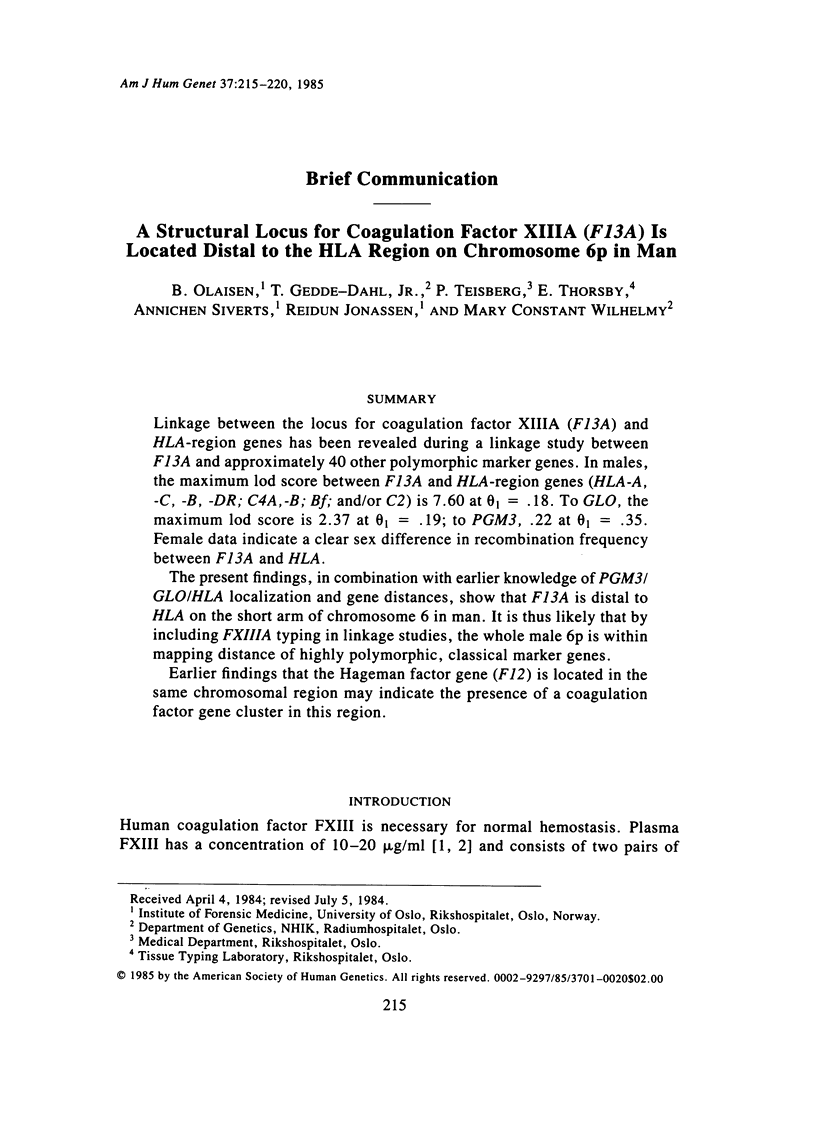
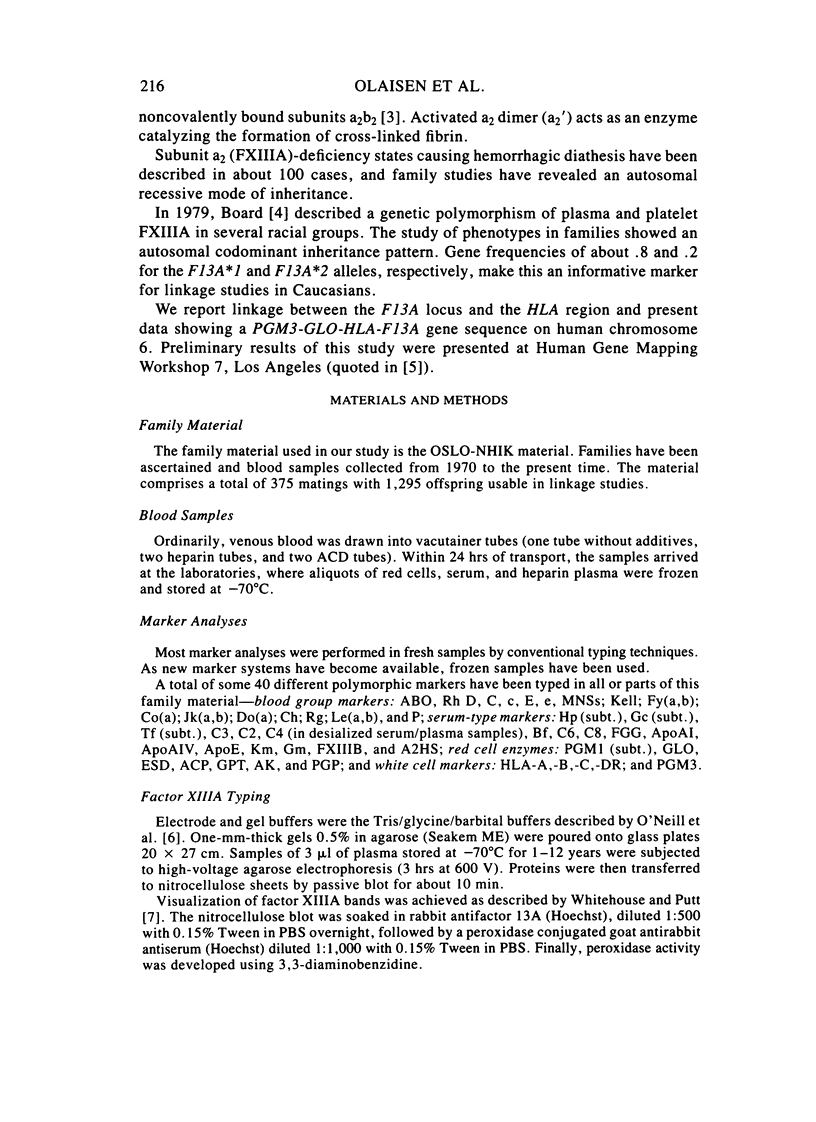
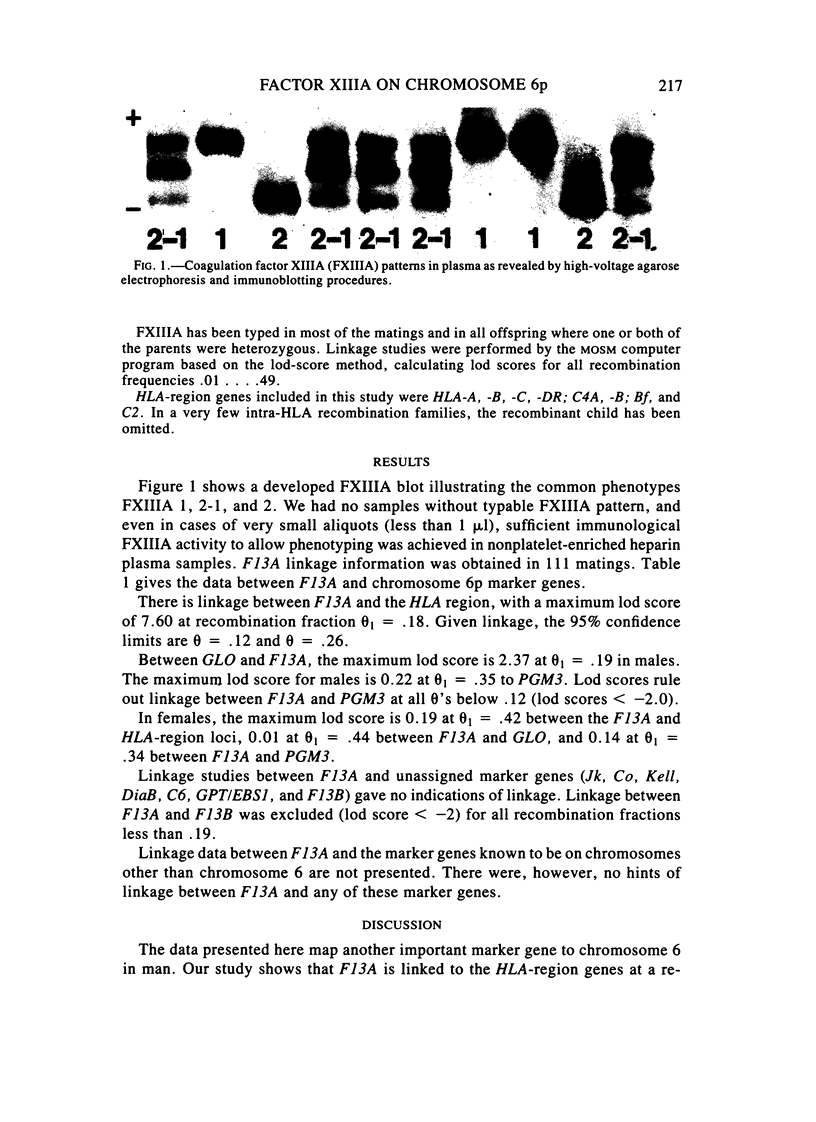
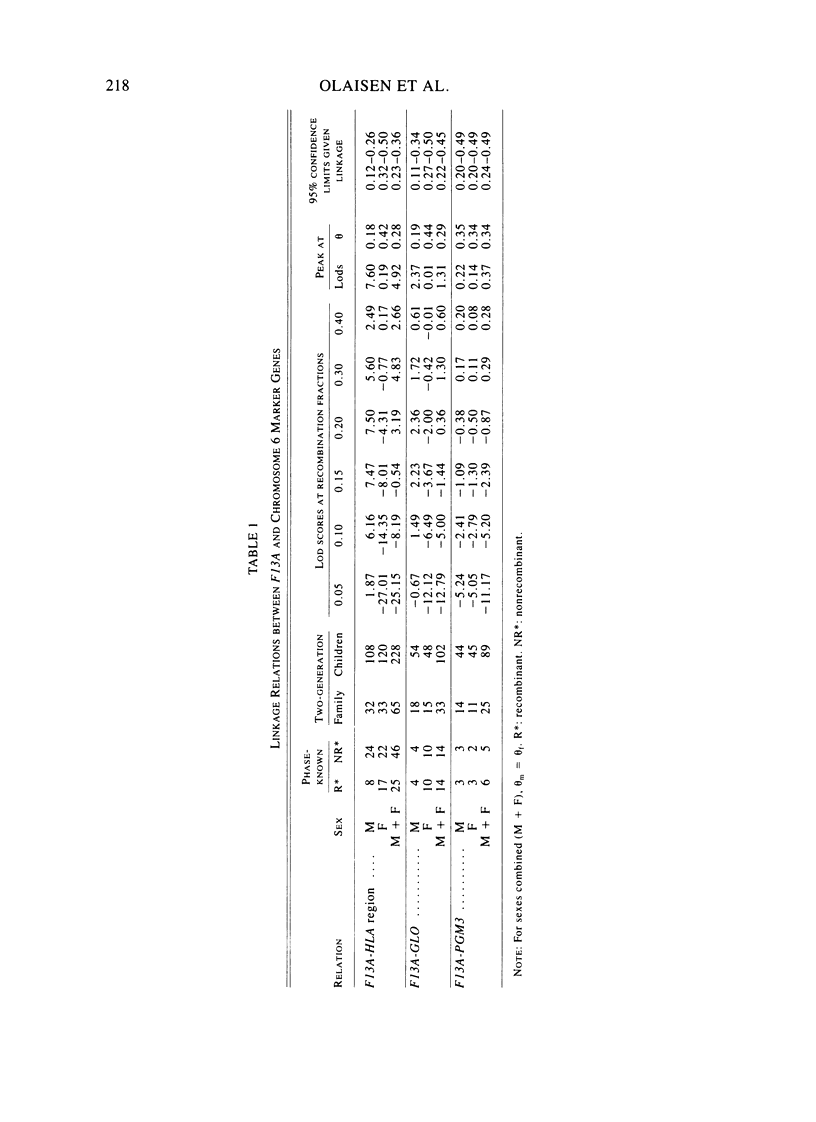
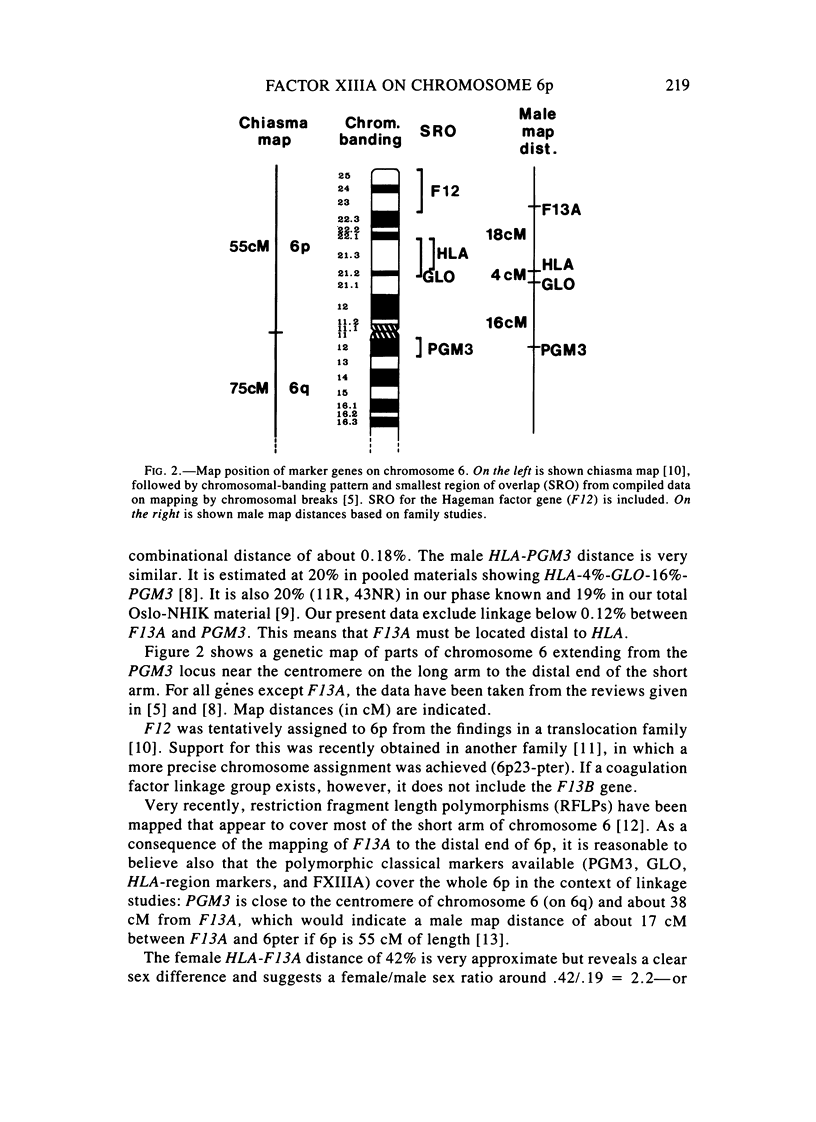
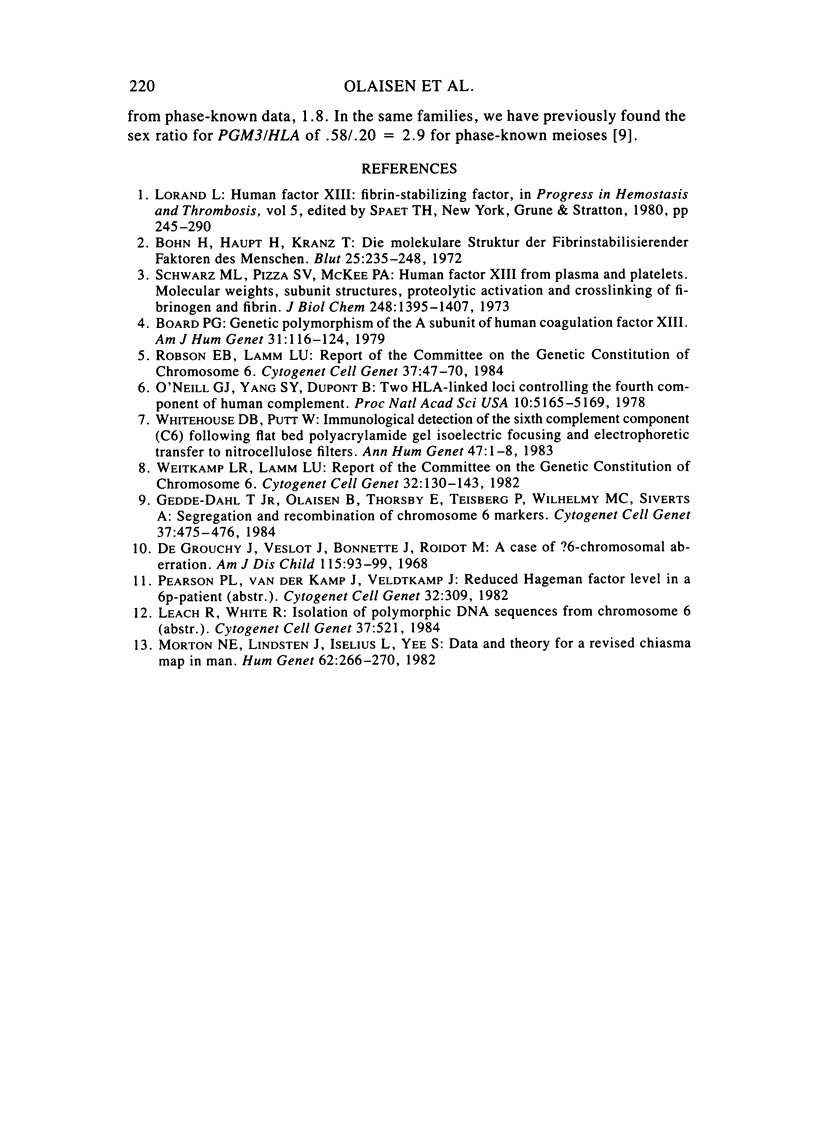
Images in this article
Selected References
These references are in PubMed. This may not be the complete list of references from this article.
- Board P. G. Genetic polymorphism of the A subunit of human coagulation factor XIII. Am J Hum Genet. 1979 Mar;31(2):116–124. [PMC free article] [PubMed] [Google Scholar]
- Bohn H., Haupt H., Kranz T. Die molekulare Struktur der fibrinstabilisierteenden Faktoren des Menschen. Blut. 1972 Oct;25(4):235–248. doi: 10.1007/BF01632188. [DOI] [PubMed] [Google Scholar]
- De Grouchy J., Veslot J., Bonnette J., Roidot M. A case of?6p- chromosomal aberration. Am J Dis Child. 1968 Jan;115(1):93–99. doi: 10.1001/archpedi.1968.02100010095019. [DOI] [PubMed] [Google Scholar]
- Morton N. E., Lindsten J., Iselius L., Yee S. Data and theory for a revised chiasma map of man. Hum Genet. 1982;62(3):266–270. doi: 10.1007/BF00333534. [DOI] [PubMed] [Google Scholar]
- O'Neill G. J., Yang S. Y., Dupont B. Two HLA-linked loci controlling the fourth component of human complement. Proc Natl Acad Sci U S A. 1978 Oct;75(10):5165–5169. doi: 10.1073/pnas.75.10.5165. [DOI] [PMC free article] [PubMed] [Google Scholar]
- Robson E. B., Lamm L. U. Report of the Committee on the Genetic Constitution of Chromosome 6. Cytogenet Cell Genet. 1984;37(1-4):47–70. doi: 10.1159/000132004. [DOI] [PubMed] [Google Scholar]
- Schwartz M. L., Pizzo S. V., Hill R. L., McKee P. A. Human Factor XIII from plasma and platelets. Molecular weights, subunit structures, proteolytic activation, and cross-linking of fibrinogen and fibrin. J Biol Chem. 1973 Feb 25;248(4):1395–1407. [PubMed] [Google Scholar]
- Weitkamp L. R., Lamm L. U. Report of the committee on the genetic constitution of chromosome 6. Oslo Conference (1981): Sixth International Workshop on Human Gene Mapping. Cytogenet Cell Genet. 1982;32(1-4):130–143. doi: 10.1159/000131693. [DOI] [PubMed] [Google Scholar]
- Whitehouse D. B., Putt W. Immunological detection of the sixth complement component (C6) following flat bed polyacrylamide gel isoelectric focusing and electrophoretic transfer to nitrocellulose filters. Ann Hum Genet. 1983 Jan;47(Pt 1):1–8. doi: 10.1111/j.1469-1809.1983.tb00964.x. [DOI] [PubMed] [Google Scholar]



